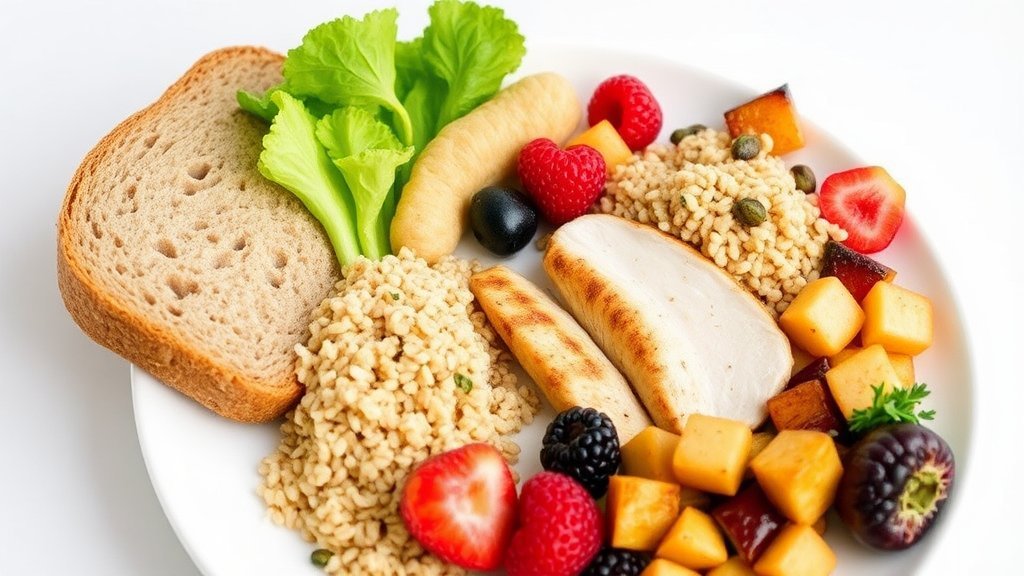Creating a Balanced Diet: The Ultimate Guide to Diabetic Meal Planning
Living with diabetes can be challenging, but with the right diet and meal plan, managing your blood sugar levels can become easier. As a person with diabetes, it’s essential to eat a balanced and nutritious diet that includes a variety of foods from all food groups. A well-planned diabetic meal plan can help you control your blood sugar levels, maintain a healthy weight, and prevent complications associated with diabetes. In this article, we will guide you through the process of creating a simple yet effective diabetic meal plan that suits your needs.
Understanding Diabetes and Nutrition
Diabetes is a condition where the body is unable to produce enough insulin or use it effectively, leading to high blood sugar levels. Nutrition plays a vital role in managing diabetes, as different foods can affect blood sugar levels differently. The key to creating a diabetic meal plan is to focus on whole, unprocessed foods like vegetables, fruits, whole grains, lean proteins, and healthy fats. These foods are rich in nutrients, fiber, and antioxidants, which can help regulate blood sugar levels and improve overall health.
Key Components of a Diabetic Meal Plan
A well-planned diabetic meal plan should include the following key components:
- Complex Carbohydrates: Focus on whole grains, fruits, and vegetables, which are rich in fiber and antioxidants.
- Lean Proteins: Include lean proteins like chicken, fish, and tofu, which can help regulate blood sugar levels.
- Healthy Fats: Incorporate healthy fats like nuts, seeds, and avocados, which can help lower cholesterol levels and improve overall health.
- Regular Meals: Space out your meals throughout the day to maintain stable blood sugar levels.
- Hydration: Drink plenty of water throughout the day to stay hydrated and help regulate blood sugar levels.
Creating a Diabetic Meal Plan
Creating a diabetic meal plan involves several steps. Here are some tips to get you started:
- Consult with a Registered Dietitian or Healthcare Provider: Before creating a meal plan, consult with a registered dietitian or healthcare provider to determine the best approach for your specific needs.
- Set Your Calorie and Macronutrient Goals: Determine how many calories you need to maintain a healthy weight and set your macronutrient goals, including carbohydrates, protein, and fat.
- Choose Balanced Meals: Focus on whole, unprocessed foods and avoid sugary drinks and refined carbohydrates.
Example 7-Day Diabetic Meal Plan
Here’s an example of a 7-day diabetic meal plan that you can follow:
Monday:
– Breakfast: Overnight oats with fruit and nuts
– Lunch: Grilled chicken breast with roasted vegetables and quinoa
– Dinner: Baked salmon with sweet potato and green beans
Tuesday:
– Breakfast: Greek yogurt with berries and granola
– Lunch: Whole grain pita with hummus, cucumber, and tomato
– Dinner: Grilled turkey breast with roasted Brussels sprouts and brown rice
Wednesday:
– Breakfast: Avocado toast with scrambled eggs and cherry tomatoes
– Lunch: Lentil soup with whole grain bread
– Dinner: Grilled chicken breast with roasted asparagus and quinoa
Thursday:
– Breakfast: Smoothie bowl with banana, spinach, and almond milk
– Lunch: Grilled chicken breast with mixed greens and whole grain wrap
– Dinner: Baked chicken thighs with roasted carrots and brown rice
Friday:
– Breakfast: Whole grain waffles with fresh berries and yogurt
– Lunch: Grilled chicken breast with mixed greens and quinoa
– Dinner: Slow-cooked chili with whole grain crackers
Saturday:
– Breakfast: Omelette with vegetables and whole grain toast
– Lunch: Grilled chicken breast with roasted broccoli and quinoa
– Dinner: Baked salmon with roasted asparagus and brown rice
Sunday:
– Breakfast: Breakfast burrito with scrambled eggs, black beans, and avocado
– Lunch: Whole grain pita with hummus, cucumber, and tomato
– Dinner: Grilled chicken breast with roasted Brussels sprouts and sweet potato
Tips and Variations
Remember, this is just an example meal plan, and you can adjust it to suit your personal preferences and needs. Here are some tips and variations to keep in mind:
- Incorporate Your Favorite Foods: Don’t be afraid to include your favorite foods in your meal plan. Just be sure to balance them with healthier options.
- Experiment with New Recipes: Try new recipes and flavors to keep your diet interesting and fun.
- Be Mindful of Portion Sizes: Control your portion sizes to maintain a healthy weight and regulate blood sugar levels.
Frequently Asked Questions
Here are some common questions about diabetic meal planning:
- Q: What is the best diet for people with diabetes?
A: The best diet for people with diabetes is a balanced and nutritious diet that includes a variety of whole foods, including fruits, vegetables, whole grains, and lean proteins. - Q: Can I still eat my favorite foods if I have diabetes?
A: Yes, you can still enjoy your favorite foods in moderation. Just be sure to balance them with healthier options and control your portion sizes. - Q: Do I need to follow a specific meal plan for diabetes?
A: A registered dietitian or healthcare provider can help you create a personalized meal plan that suits your needs and health goals.
Conclusion
Creating a diabetic meal plan can seem overwhelming, but with the right guidance and support, you can develop a healthy and balanced diet that helps you manage your blood sugar levels and improve your overall health. Remember to focus on whole, unprocessed foods, eat regular meals, and stay hydrated. With a little planning and creativity, you can create a delicious and nutritious meal plan that suits your needs and preferences.
By following the tips and guidelines outlined in this article, you can create a diabetic meal plan that works for you. Don’t be afraid to experiment with new recipes and flavors, and be sure to consult with a registered dietitian or healthcare provider for personalized guidance. With the right meal plan, you can take control of your diabetes and live a healthier, happier life.
Take Action
Ready to elevate your general experience? Apply the insights from this guide and see the difference for yourself. Remember, consistency is key to achieving your goals. Start implementing these strategies today and watch your progress soar!



